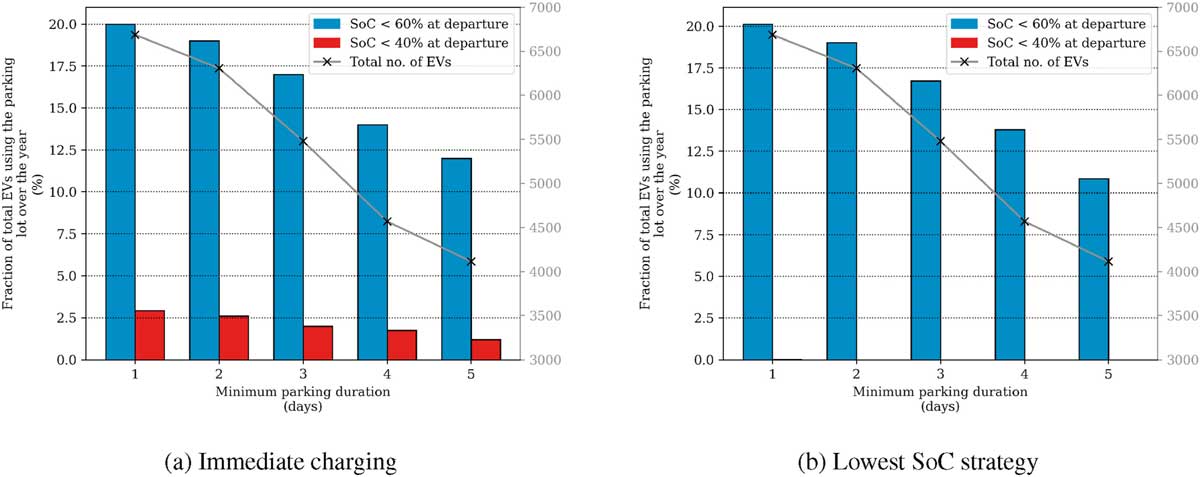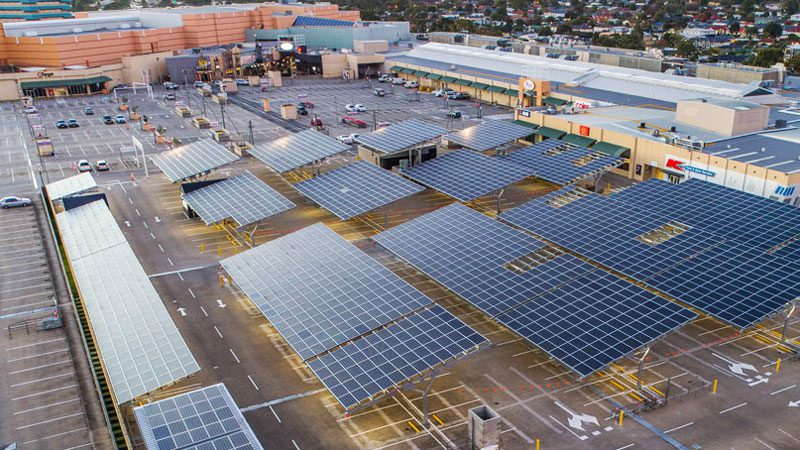For electric vehicles to be truly zero-emissions they need to be charged with energy from renewable resources, and the cheapest of these options to harvest energy directly from the sun using solar panels.
But even when charged using renewable energy from the grid there is energy embedded in the poles and wires, and the administration and maintenance of the network that distributes the energy around the grid.
And as many owners of electric vehicles are aware, auxiliary systems often slowly reduce the battery state-of-charge (SoC) meaning that if left in a carpark during a long period of absence, they risk coming back to a car that may not have enough charge to drive home.
It is issues like these that raise discussions about whether electric vehicles can be charged straight from solar panels – perhaps in solar-panel shaded car parks such as at airports and logistic hubs.
A new study prepared for the Energy journal by the Dutch Delft University of Technology says yes, it’s possible, if electric vehicles with a lower state of charge are prioritised and if cars are parked for long enough.
By modelling electric vehicles being charged when parked at off-grid long-term carparks during the European winter (December, the most critical month for charging from the sun), they found that nearly all the vehicles left with between 40% and 80% SoC.
Just 0.2% in the December test left the carpark with less than 40% S0C, the percentage at which the researchers stated concern for enough range to reach the vehicle’s next destination.
While researchers proclaim that the December study shows charging from a solar off-grid carpark “remains a challenge,” the study also looks at ways to resolve this.
One might think using more efficient panels would be the go-to solution, but the research showed that parking longer is more effective.
While this may seem obvious, it’s how much longer that is important because with this kind of information EV drivers could be more informed about how much SoC they need to leave their car with depending on how long they plan to park.
The researchers also showed that by prioritising EVs with a low S0C they could completely eliminate vehicles leaving with less than 40% S0C.

Citation:
Rishabh Ghotge, Advan Wijk, Zofia Lukszo
Off-grid solar charging of electric vehicles at long-term parking locations
Energy, 2021
https://doi.org/10.1016/j.energy.2021.120356

Bridie Schmidt is associate editor for The Driven, sister site of Renew Economy. She has been writing about electric vehicles since 2018, and has a keen interest in the role that zero-emissions transport has to play in sustainability. She has participated in podcasts such as Download This Show with Marc Fennell and Shirtloads of Science with Karl Kruszelnicki and is co-organiser of the Northern Rivers Electric Vehicle Forum. Bridie also owns a Tesla Model Y and has it available for hire on evee.com.au.

